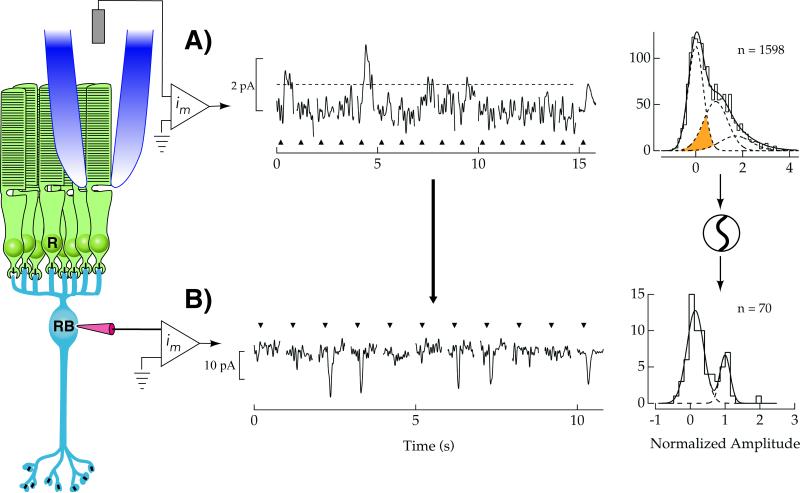Figure 3.
A threshold in rod bipolar cells improves the signal-to-noise ratio of the rod photoresponse. A: The delivery of flashes of light (upward triangles) yielding on average less than 1 photon absorbed per trial generates individual rod photocurrents of variable size in the mouse retina. These responses result from 0, 1, or 2 absorbed photons with the smallest responses remaining difficult to discern from the rod continuous noise. A histogram of response amplitudes demonstrates this difficulty in discerning signals from noise, as the Gaussian distributions of single-photon response and continuous noise amplitudes overlap considerably (shaded). To improve the detection of single-photon responses in rod bipolar cells, a threshold is applied to the rod output (dashed line), after which rod bipolar cells pool these signals. B: Individual rod bipolar currents in response to a flash of light (triangles) that produce photon absorptions in a small fraction of the rods. Single-photon responses are more discernable compared to trials where no response was observed. A histogram of response amplitudes reveals that Gaussian distributions of single-photon response and noise amplitudes are more separated compared to the rods, indicating a higher SNR compared to the rods. Data shown from [23].

